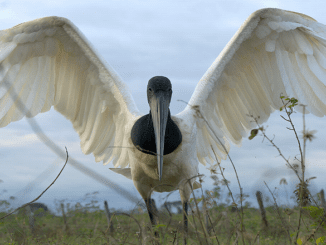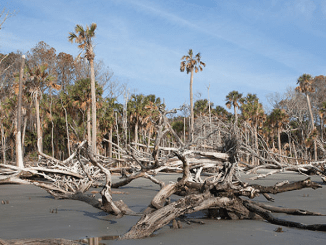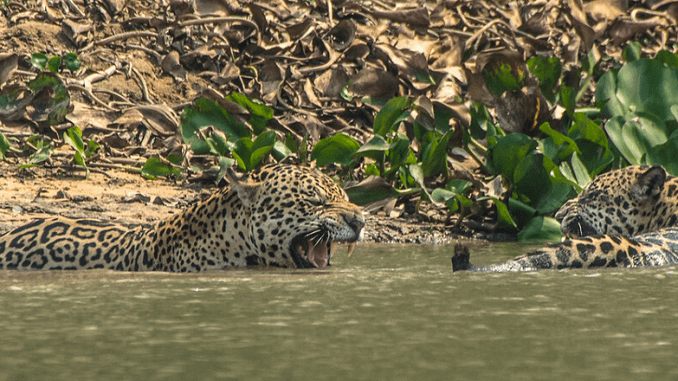
GENEVA, Switzerland, February 2, 2022 (ENS) – In 2020 wildfires destroyed 30 percent of the Pantanal, South America’s largest wetland extending across Bolivia, Brazil and Paraguay. For the last 60 years, Lake Chad, one of Central Africa’s extensive wetlands, has been disappearing.
World Wetlands Day, marked by the United Nations for the first time this year, highlights the importance of the conservation and sustainability of one of the world’s most threatened ecosystems for the health of people and the planet.
“It’s a great pleasure for me to celebrate World Wetlands Day with you, for the first time as a United Nations International Day. This is a recognition by the United Nations of the global importance of our Wetlands and the global importance of managing them and preserving them,” CITES Secretary-General Ivonne Higuero told the world in a video message today.
An environmental economist and the first woman to head the organization that administers the Convention on the International Trade in Endangered Species of Wild Flora and Fauna, CITES, Higuero warned that “over the past 55 years, we’ve lost more than a third of Earth’s wetlands, almost wholly because of human activity.”
“We have drained the water and built houses and roads and destroyed the balance of plants and animals that allowed the wetlands to flourish,” she lamented.

“In English there are nearly a hundred words that are used for wetlands – marshes, fens, moors, bogs, are just some of the common ones,” Higuero said, “but behind all of these words are little worlds that support specialised species of plants and animals and give so much to us and our planet. They can absorb tides and winds, hold flood water and give us clean air and clean water. They are vital bubbles of life, or ecosystems, if you prefer.”
Higuero says that days like World Wetlands Day, and World Wildlife Day on March third, are about recognizing the damage done and what we need to do to manage and preserve wetlands “that one way or another, we all depend upon.”
“I’m pleased to say that the countries of the world have recognised what needs to be done to preserve our ecosystems and the wildlife that inhabits them. They have put in place conventions, such as Ramsar and CITES, that are designed to arrest and reverse the damage.”
“It is now time to ensure full implementation of these conventions and achieve their objectives,” the CITES secretary-general said, pledging to continue a close collaboration between the CITES and Ramsar organizations.
The Ramsar Convention is the treaty that provides the framework for the conservation and wise use of wetlands and their resources. The Convention was adopted in the Iranian city of Ramsar in 1971 and came into force in 1975. Since then, almost 90 percent of UN member states, from all the world’s geographic regions, have joined.
CITES is the treaty that aims to ensure that international trade in specimens of wild animals and plants does not threaten the survival of the species. Eighty countries adopted the CITES treaty on March 3, 1973, and on July 1, 1975 it entered into force. It now covers around 25,000 plant species and 5,000 animal species.
“We know that wetlands play a vital role in maintaining the biodiversity that is the key to our future,” Higuero said. “We know that 40 percent of the world’s plants and animals depend on wetlands, and we know that without them we can’t achieve the sustainable development targets we’ve set ourselves.”
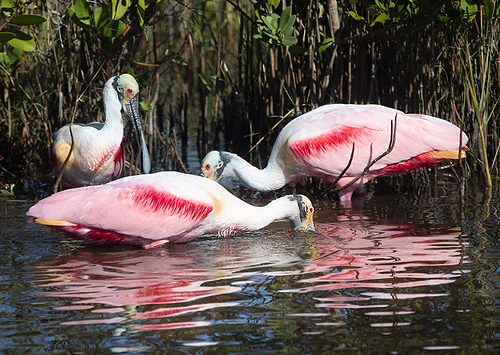
Wetlands are disappearing three times faster than forests and are Earth’s most threatened ecosystem, according to the UN. In just 50 years – since 1970 – 35 percent of the world’s wetlands have vanished.
“Wetlands are life providers. They contribute services worth US$47 trillion annually: including almost all of our fresh water, food, raw materials and life medicines,” Martha Rojas Urrego, secretary-general of the Ramsar Convention on Wetlands, said.
“But despite these critical benefits, we are losing wetlands three times faster than forests,” she warned. “It’s critical that actions to protect, manage and restore wetlands are raised in the Post-2020 Global Biodiversity Framework and countries’ nationally determined contributions to deliver the scale of impact we need.”
The Post-2020 Biodiversity Framework is scheduled for adoption during the UN Biodiversity Conference in May 2022 in Kunming, China.
The Ramsar Convention on Wetlands campaign this year aims to stimulate urgent actions to reverse wetlands loss – through mobilizing finance, transforming agricultural practices, reducing water waste, contributing to restoration efforts or supporting local wetland cleanups.
Africa Flooded After Human Destruction of Wetlands
Dr. Mithika Mwenda, executive director of the Pan African Climate Justice Alliance, PACJA, said it is the encroachment on wetlands that has led to suffering communities that experience the global climate crisis in the form of flooded homes, flooded roads, flooded farms and loss of crops with even slight rains.
Over the last few days, roughly 200,000 people in Southern African countries of Malawi, Mozambique, Zimbabwe and Zambia were displaced by the ravages of Tropical Storm Ana. The storm and resulting floods have killed at least 21 people and injured 210 others.
Mwenda says intact wetlands could have helped mitigate the negative impacts of the flooding. “Wetlands have economic potential. First, besides mitigating the negative impacts of flooding, scarcity of water and soil erosion, wetlands also have wider environmental and economic benefits, such as hubs for eco-tourism,” said Mwenda.
The UN Environment agency, UNEP, calls wetlands biodiversity hotspots, carbon sinks and the source of livelihoods, with potentials to regionally increase food security by sustainably increasing food production and supporting ecosystem services and ecosystem functions.
Globally, wetlands such as the papyrus-dominated wetlands of East Africa are recognized as providing invaluable and effective ecosystems for carbon capture and storage.

But Mwenda warns that wetlands face challenges – deforestation and encroachment for agriculture, settlement and industrial development; invasive and alien species; improper land use planning and/or land use change negatively affecting the regulatory functions of the wetland ecosystems.
Mwenda observes that the rising population and the rising prices of land have put even wetlands at danger from real estate speculators.
“The sad thing is that even where governments have ratified the Ramsar Convention,” said Mwenda, “they are still allowing private people to infringe on wetlands.”
A broad definition of wetlands includes ecosystems such as lakes and rivers, underground aquifers, swamps, and many others; as well as human-made sites such as fishponds or reservoirs.
Though they cover only around six percent of the Earth’s land surface, 40 percent of all plant and animal species live or breed in wetlands.
Vital for human wellbeing and security, more than a billion people across the world depend on wetlands for their livelihoods, about one in eight people on Earth.
New Zealand Conservationists Seek to Double Wetlands
Forest & Bird and 10 other organizations are calling Prime Minister Jacinda Ardern to double the extent of natural wetlands across New Zealand by 2050.
The government has welcomed the call to action. “We’ve lost 90 per cent of our wetlands since human habitation, which is one of the highest rates of loss in the world. We must protect what remains,” Environment Minister David Parker said.
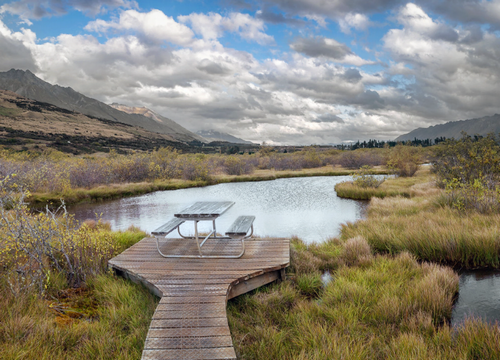
“Strong protections along with our significant investment and efforts to restore and re-establish them, are an important part of the Government’s commitment to improve freshwater health and management. Protecting and restoring wetlands is a key aspect of the Government’s Essential Freshwater reforms.”
To mark World Wetlands Day the Department of Conservation has published reports on five New Zealand Ramsar wetland sites.
“Wetlands provide numerous benefits including protecting and improving water quality, providing a rich habitat for taonga species, a hauanga kai [food gathering], as well as storing floodwater and maintaining surface water flow during dry periods,” Conservation Minister Kiri Allan said.
Wetlands hold large stores of carbon. When undisturbed, they absorb and retain carbon from the air, sometimes for thousands of years. But when wetlands are drained they become a source of greenhouse gas emissions.
“Preventing the destruction of wetlands can help avoid greenhouse gas emissions as well as provide a range of other environmental, biodiversity, and community benefits,” Allan said.
Parker said the government is supporting numerous projects to restore wetlands via the Jobs for Nature programme or the Nature Heritage Fund, in collaboration with regional councils, communities and landowners.

Convention on Wetlands (Photo courtesy Earth Negotiations Bulletin)
“To date, 192 freshwater restoration projects have been approved to receive Jobs for Nature funding. Many of these projects involve wetland restoration as a core objective.”
The government has also contributed NZ$11.2 million towards the purchase of a farm near Lake Horowhenua that will be converted to wetland to help improve water quality in the lake.
“We know what we have to do and we know how to do it,” said Rojas, the Ramsar Convention on Wetlands leader.
“We need action from all of society to rewet, reforest and restore wetlands to protect our most biodiverse and valuable ecosystem for people and nature.”
Featured image: Jaguars play in a wetland stream in Brazil’s northern Pantanal. August 18, 2020 (Photo by Daniel Kantek / Oregon State University)


